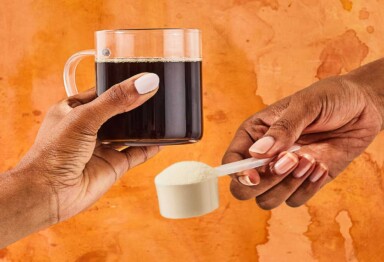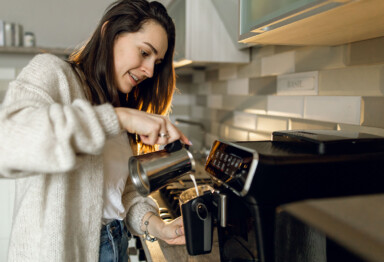Bulletproof Blog
From Recipes to Wellness, This Is Keto Made Easy.

Low-Carb Grocery List
If you’re new to a low-carb diet, a simple trip to the grocery store can be overwhelming. The smells of fresh bread or freshly baked cookies might be calling your name while navigating new aisles or dissecting food labels. The...

Fermented Foods for Gut Health
Fermented foods like sauerkraut may be acidic and sour, but the benefits are pretty sweet. They promote the growth of probiotics—the “good” bacteria that help foster a healthy gut. Probiotics keep bad bacteria in check and promote a diverse microbiome...

9 Cabbage Recipes to Eat on the Bulletproof Diet
If you currently have a head of cabbage in your crisper drawer, it’s time to get cooking. Cabbage is one of the most versatile, cost-effective and low-calorie vegetables around. There are many types of cabbage, such as red, green, napa...

Fish Oil Benefits
Fish is a surefire way to up your nutrition game. Benefits may include supporting brain function, helping with inflammation and heart health support. Fatty fish, in particular (think salmon, herring, mackerel, tuna and sardines) are rich in omega-3 fatty acids,...

Astaxanthin Benefits
Ever wondered what gives some seafood a red hue? Or what makes flamingos’ feathers pink? Enter astaxanthin. It’s a carotene that gives color (pigment) to fish such as salmon, lobster and shrimp. This is not the same as beta-carotene, another...

5 Easy Mocha Creamer Recipes That Boost Your Daily Wellness
Regularly moving your body and eating balanced meals are essential to a healthier lifestyle. But that doesn’t mean tweaking your daily wellness routine has to be boring or something you always dread. When it comes to making those changes, starting...

Satiety Index
Not including enough satiety-rich foods in your diet is a recipe for disaster. Satiety refers to the feeling of fullness after eating. If you don’t want hunger to take over soon after you eat, load up your plate with filling...

Collagen in Coffee
If you’re looking for some added benefits from your daily cup of coffee, collagen can help. Artificial creamers and sugars can pack in calories and leave you feeling sluggish. By comparison, collagen powder and liquid collagen supplements offer many health...

How to Clean a Coffee Maker
Did you know coffee makers can accumulate bacteria and mold? If not, this is your wake-up call to clean one of the kitchen’s most-loved appliances. Take a few minutes to clean your coffee pot daily and make time for monthly...

How Much Caffeine Is in a Cup of Coffee
Whether you take your coffee black, with cream and sugar or whipped into a fancy Frappuccino, we can all agree that coffee is great. Each blissful sip makes your mind feel more alert (even on days where you got little-to-no...

Foods Rich in Antioxidants
The immune system isn’t the only superhero that fights off illness. There’s another anti-hero that deserves a cape of its own: antioxidants. Antioxidants are molecules that protect cells from damage caused by compounds called free radicals. If the body has...

Sugar Alternatives
Added sugars hide in so many foods you wouldn’t expect. If you check the nutrition labels on food products, you may find a surprising amount of sugar in peanut butter, salad dressings, bread, cereals and even spaghetti sauce. Sugar is...

What is a Low Carb Diet?
Keto, paleo and the Atkins diet may get all the buzz when it comes to low carb, but people can’t forget about the OG: a low carb diet. A low carb (carbohydrate) diet involves restricting the number of carbohydrates, such...

Low Carb Meals
Going low carb doesn’t mean going low on taste. Whether you need meals for breakfast, lunch or dinner, we’ve got you covered with delicious and easy recipes that scale back on carbs — not flavor. Most of these recipes contain...

Keto Desserts
Maintaining a healthy lifestyle while satisfying your sweet tooth can be challenging, but it’s not impossible! Whether you’re on a keto diet or just looking to explore better-for-you dessert recipes, there are a ton of options that align with low-carb,...

Alkaline Diet
If a diet sounds too good to be true, it probably is. Case in point: The alkaline diet is based on the theory that you prevent cancer by altering the blood’s pH levels through the foods you eat. But these...